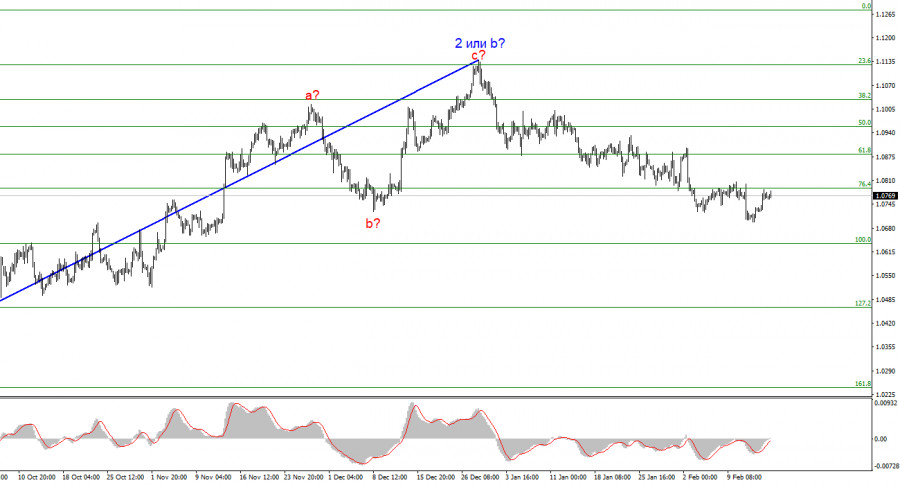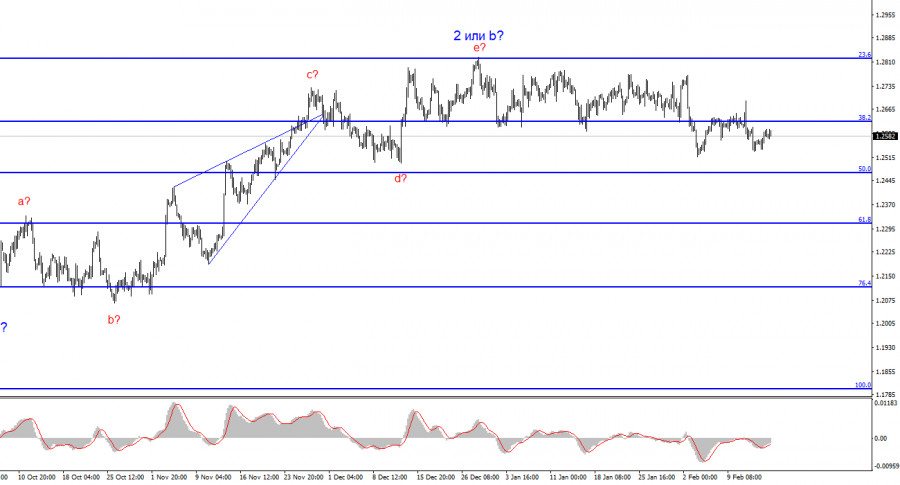
The euro ended the week near its mid-November lows. I can't say that we saw a pronounced decline from the euro, but we can take note of several important points. First, traders failed to break through the 1.0786 level, which corresponds to 76.4% Fibonacci. Second, the formation of the descending wave 3 or C continues. Third, the news background played both "for" and "against" the dollar. Despite the market's fairly attentive reaction to economic data this week, the market is still focused on the topic of interest rates. Furthermore, many European Central Bank Governing Council members continue to hold opposite opinions on this topic.
Two days ago, Isabel Schnabel said that monetary policy must remain restrictive until the ECB can be confident price gains will sustainably return to the 2% medium-term target. Earlier this week, ECB President Christine Lagarde made exactly the same statement. Schnabel also noted that negative productivity growth increases the risk that firms may pass higher wage costs on to consumers. This factor could negatively impact inflation dynamics and slow it down. It is also worth noting that the probability of a rate cut in April is just over 50%, which, in my opinion, is quite high, as the market did not expect the first easing until the fall earlier this year.

At the same time, another ECB Governing Council member, Francois de Gallo said that the ECB should not hold off the first rate cut for too long. He added nothing more on this issue, only mentioning that the ECB is set to cut interest rates at some point in 2024. As we can see, the rhetoric of some ECB representatives differs from each other, but the scales still lean towards the dovish scenario, which implies a faster transition to a more "soft" policy.
Based on this factor, I expect the euro to fall further. Most likely, it will be as gradual as it has been in recent weeks. Weak U.S reports did not hinder the euro's decline this week, which means that the market is bearish, which is a very good thing.
Based on the analysis, I conclude that a bearish wave pattern is being formed. Wave 2 or b appears to be complete, so in the near future, I expect an impulsive descending wave 3 or c to form with a significant decline in the instrument. The failed attempt to break through the 1.1125 level, which corresponds to the 23.6% Fibonacci, suggests that the market is prepared to sell a month ago. I am currently considering short positions with targets around the level of 1.0462, which corresponds to 127.2% according to Fibonacci.

The wave pattern for the GBP/USD pair suggests a decline. At this time, I am considering selling the instrument with targets below the 1.2039 mark because wave 2 or b will eventually end, just like the sideways trend. A successful attempt to break through the 1.2627 level acted as a sell signal. Another signal was formed, in the form of an unsuccessful attempt to break this level from below. Now I am quite confident about the instrument's decline, at least to the 1.2468 level, which would already be a significant achievement for the dollar, as the demand for it remains very low.
The material has been provided by InstaForex Company - www.instaforex.comfrom Forex analysis review https://ift.tt/QEn4zlV
via IFTTT
